2010 NY Slip Op 50927(U)
HSBC BANK USA, N.A. AS TRUSTEE FOR NOMURA ASSET-BACKED CERTIFICATE SERIES
2006-AF1,, Plaintiff,
v.
LOVELY YEASMIN, ET. AL., Defendants.
34142/07
Supreme Court, Kings County.
Decided May 24, 2010.
Steven J Baum, PC, Amherst NY, Plaintiff — US Bank.
ARTHUR M. SCHACK, J.
Plaintiff’s renewed motion for an order of reference, for the premises located at 22 Jefferson Street, Brooklyn, New York (Block 3170, Lot 20, County of Kings), is denied with prejudice. The instant action is dismissed and the notice of pendency for the subject property is cancelled. Plaintiff HSBC BANK USA, N.A. AS TRUSTEE FOR NOMURA ASSET-BACKED CERTIFICATE SERIES 2006-AF1 (HSBC) failed to comply with my May 2, 2008 decision and order in the instant matter (19 Misc 3d 1127 [A]), which granted plaintiff HSBC leave:
to renew its application for an order of reference for the premises located at 22 Jefferson Street, Brooklyn, New York (Block 3170, Lot 20, County of Kings), upon presentation to the Court, within forty-five (45) days of this decision and order of:
(1) a valid assignment of the instant mortgage and note to plaintiff, HSBC . . .;
(2) an affirmation from Steven J. Baum, Esq., the principal of Steven J. Baum, P.C., explaining if both MORTGAGE ELECTRONIC REGISTRATION SYSTEMS, INC. [MERS], the assignor of the instant mortgage and note, and HSBC . . . the assignee of the instant mortgage and note, pursuant to 22 NYCRR § 1200.24, consented to simultaneous representation in the instant action, with “full disclosure of the implications of the simultaneous representation and the advantages and risks involved” explained to them;
(3) compliance with the statutory requirements of CPLR § 3215 (f), by an affidavit of facts executed by someone with authority to execute such an affidavit, and if the affidavit of facts is executed by a loan servicer, a copy of a valid power of attorney to the loan servicer, and the servicing agreement authorizing the affiant to act in the instant foreclosure action; and
(4) an affidavit from an officer of plaintiff HSBC . . . explaining why plaintiff HSBC . . . purchased a nonperforming loan from MERS, as nominee for CAMBRIDGE HOME CAPITAL, LLC [CAMBRIDGE].
[Emphasis added]
Plaintiff made the instant motion on January 6, 2009, 249 days subsequent to the May 2, 2008 decision and order. Thus, the instant motion is 204 days late. Plaintiff’s unavailing lateness explanation, in ¶ 16 of plaintiff’s counsel’s January 6, 2009 affirmation of regularity, states:
A previous application has been made for this or like relief but was subsequently denied without prejudice with leave to renew upon proper papers. By Decision and Order of this court dated the 2nd day of May 2008, plaintiff had 45 days to renew its application.
However on June 29, 2008 the Plaintiff permitted the mortgagor to enter into a foreclosure forbearance agreement. Said agreement was entered into with the hope that the Defendant would be able to keep her home. The agreement was not kept by the mortgagor and Plaintiff has since resumed the foreclosure action. The defects of the original application are addressed in the Affirmation attached hereto at Tab F [sic].
June 29, 2008 was 58 days subsequent to May 2, 2008. This was 13 days subsequent to the Court ordered deadline for plaintiff to make a renewed motion for an order of reference. While it’s laudatory for plaintiff HSBC to have granted defendant a forbearance agreement, plaintiff HSBC never notified the Court about this or sought Court approval of extending the 45-day deadline to make the instant motion. However, even if the instant motion was timely, the documents plaintiff’s counsel refers to at Tab F [exhibit F of motion] do not cure the defects the Court found with the original motion and articulated in the May 2, 2008 decision and order.
Background
Defendant LOVELY YEASMIN borrowed $624,800.00 from CAMBRIDGE on May 10, 2006. The note and mortgage were recorded by MERS, as nominee for CAMBRIDGE, for purposes of recording the mortgage, in the Office of the City Register, New York City Department of Finance, on May 23, 2006, at City Register File Number (CRFN) XXXXXXXXXXXXX. Then, MERS, as nominee for CAMBRIDGE, assigned the mortgage to plaintiff HSBC on September 10, 2007, with the assignment recorded in the Office of the City Register, on September 20, 2007, at CRFN XXXXXXXXXXXXX. The assignment was executed by “Nicole Gazzo, Esq., on behalf of MERS, by Corporate Resolution dated 7/19/07.” Neither a corporate resolution nor a power of attorney to Ms. Gazzo were recorded with the September 10, 2007 assignment. Therefore, the Court found the assignment invalid and plaintiff HSBC lacked standing to bring the instant foreclosure action. Ms. Gazzo, the assignor, according to the Office of Court Administration’s Attorney Registration, has as her business address, “Steven J. Baum, P.C., 220 Northpointe Pkwy Ste G, Buffalo, NY 14228-1894.” On September 10, 2008, the same day that Ms. Gazzo executed the invalid assignment for MERS, as nominee for CAMBRIDGE, plaintiff’s counsel, Steven J. Baum, P.C., commenced the instant action on behalf of purported assignee HSBC by filing the notice of pendency, summons and complaint in the instant action with the Kings County Clerk’s Office. The Court, in the May 2, 2008 decision and order, was concerned that the simultaneous representation by Steven J. Baum, P.C. of both MERS and HSBC was a conflict of interest in violation of 22 NYCRR § 1200.24, the Disciplinary Rule of the Code of Professional Responsibility entitled “Conflict of Interest; Simultaneous Representation,” then in effect. Further, plaintiff’s moving papers for an order of reference and related relief failed to present an “affidavit made by the party,” pursuant to CPLR § 3215 (f). The instant application contained an “affidavit of merit and amount due,” dated November 16, 2007, by Cathy Menchise, “Senior Vice President of WELLS FARGO BANK, N.A. D/B/A AMERICA’S SERVICING COMPANY, Attorney in Fact for HSBC BANK USA, N.A. AS TRUSTEE FOR NOMURA ASSET-BACKED CERTIFICATE SERIES 2006-AF1.” Ms. Menchise stated “[t]hat a true copy of the Power of Attorney is attached hereto.” Actually attached was a photocopy of a “Limited Power of Attorney,” dated July 19, 2004, from HSBC, appointing WELLS FARGO BANK, N.A. as its attorney-in-fact to perform various enumerated services, by executing documents “if such documents are required or permitted under the terms of the related servicing agreements . . . in connection with Wells Fargo Bank, N.A.[‘s] . . . responsibilities to service certain mortgage loans . . . held by HSBC . . . as Trustee of various trusts.” The “Limited Power of Attorney” failed to list any of these “certain mortgage loans.” The Court was unable to determine if plaintiff HSBC’s subject mortgage loan was covered by this “Limited Power of Attorney.” The original motion stated that defendant YEASMIN defaulted on her mortgage payments by failing to make her May 1, 2007 and subsequent monthly loan payments. Yet, on September 10, 2007, 133 days subsequent to defendant YEASMIN’S alleged May 1, 2007 payment default, plaintiff HSBC took the ssignment of the instant nonperforming loan from MERS, as nominee for CAMBRIDGE. Thus, the Court required, upon renewal of the motion for an order of reference, a satisfactory explanation of why HSBC purchased a nonperforming loan from MERS, as nominee for CAMBRIDGE.
Plaintiff HSBC needed “standing” to proceed in the instant action. The Court of Appeals (Saratoga County Chamber of Commerce, Inc. v Pataki, 100 NY2d 801, 912 [2003]), cert denied 540 US 1017 [2003]), held that “[s]tanding to sue is critical to the proper functioning of the judicial system. It is a threshold issue. If standing is denied, the pathway to the courthouse is blocked. The plaintiff who has standing, however, may cross the threshold and seek judicial redress.” In Carper v Nussbaum, 36 AD3d 176, 181 (2d Dept 2006), the Court held that “[s]tanding to sue requires an interest in the claim at issue in the lawsuit that the law will recognize as a sufficient predicate for determining the issue at the litigant’s request.” If a plaintiff lacks standing to sue, the plaintiff may not proceed in the action. (Stark v Goldberg,297 AD2d 203 [1d Dept 2002]). “Since standing is jurisdictional and goes to a court’s authority to resolve litigation [the court] can raise this matter sua sponte.” (Axelrod v New York State Teachers’ Retirement System, 154 AD2d 827, 828 [3d Dept 1989]).
In the instant action, the September 10, 2007 assignment from MERS, as nominee for CAMBRIDGE, to HSBC was defective. Therefore, HSBC had no standing to bring this action. The recorded assignment by “Nicole Gazzo, Esq. on behalf of MERS, by Corporate Resolution dated 7/19/07,” had neither the corporate resolution nor a power of attorney attached. Real Property Law (RPL) § 254 (9) states: Power of attorney to assignee. The word “assign” or other words of assignment, when contained in an assignment of a mortgage and bond or mortgage and note, must be construed as having included in their meaning that the assignor does thereby make, constitute and appoint the assignee the true and lawful attorney, irrevocable, of the assignor, in the name of the assignor, or otherwise, but at the proper costs and charges of the assignee, to have, use and take all lawful ways and means for the recovery of the money and interest secured by the said mortgage and bond or mortgage and note, and in case of payment to discharge the same as fully as the assignor might or could do if the assignment were not made. [Emphasis added]
To have a proper assignment of a mortgage by an authorized agent, a power of attorney is necessary to demonstrate how the agent is vested with the authority to assign the mortgage. “No special form or language is necessary to effect an assignment as long as the language shows the intention of the owner of a right to transfer it [Emphasis added].” (Tawil v Finkelstein Bruckman Wohl Most & Rothman, 223 AD2d 52, 55 [1d Dept 1996]). (See Suraleb, Inc. v International Trade Club, Inc., 13 AD3d 612 [2d Dept 2004]). To foreclose on a mortgage, a party must have title to the mortgage. The instant assignment was a nullity. The Appellate Division, Second Department (Kluge v Fugazy, 145 AD2d 537, 538 [2d Dept 1988]), held that a “foreclosure of a mortgage may not be brought by one who has no title to it and absent transfer of the debt, the assignment of the mortgage is a nullity.” Citing Kluge v Fugazy, the Court inKatz v East-Ville Realty Co. (249 AD2d 243 [1d Dept 1998]), held that “[p]laintiff’s attempt to foreclose upon a mortgage in which he had no legal or equitable interest was without foundation in law or fact.” Plaintiff HSBC, with the invalid assignment of the instant mortgage and note from MERS, lacked standing to foreclose on the instant mortgage. The Court, in Campaign v Barba (23 AD3d 327 [2d Dept 2005]), held that “[t]o establish a prima facie case in an action to foreclose a mortgage, the plaintiff must establish the existence of the mortgage and the mortgage note, ownership of the mortgage, and the defendant’s default in payment [Emphasis added].” (See Household Finance Realty Corp. of New York v Wynn, 19 AD3d 545 [2d Dept 2005]; Sears Mortgage Corp. v Yahhobi, 19 AD3d 402 [2d Dept 2005]; Ocwen Federal Bank FSB v Miller, 18 AD3d 527 [2d Dept 2005]; U.S. Bank Trust Nat. Ass’n v Butti, 16 AD3d 408 [2d Dept 2005]; First Union Mortgage Corp. v Fern, 298 AD2d 490 [2d Dept 2002]; Village Bank v Wild Oaks Holding, Inc., 196 AD2d 812 [2d Dept 1993]). Even if plaintiff HSBC can cure the assignment defect, plaintiff’s counsel has to address his conflict of interest in the representation of both assignor MERS, as nominee for CAMBRIDGE, and assignee HSBC. 22 NYCRR § 1200.24, of the Disciplinary Rules of the Code of Professional Responsibility, entitled “Conflict of Interest; Simultaneous Representation,” states in relevant part: (a) A lawyer shall decline proffered employment if the exercise of independent professional judgment in behalf of a client will be or is likely to be adversely affected by the acceptance of the proffered employment, or if it would be likely to involve the lawyer in representing differing interests, except to the extent permitted under subdivision (c) of this section. (b) A lawyer shall not continue multiple employment if the exercise of independent professional judgment in behalf of a client will be or is likely to be adversely affected by the lawyer’s representation of another client, or if it would be likely to involve the lawyer in representing differing interests, except to the extent permitted under subdivision (c) of this section. (c) in the situations covered by subdivisions (a) and (b) of this section, a lawyer may represent multiple clients if a disinterested lawyer would believe that the lawyer can competently represent the interest of each and if each consents to the representation after full disclosure of the implications of the simultaneous representation and the advantages and risks involved. [Emphasis added]
The Court, upon renewal of the instant motion for an order of reference wanted to know if both MERS and HSBC were aware of the simultaneous representation by plaintiff’s counsel, Steven J. Baum, P.C., and whether both MERS and HSBC consented. Upon plaintiff’s renewed motion for an order of reference, the Court required an affirmation by Steven J. Baum, Esq., the principal of Steven J. Baum, P.C., explaining if both MERS and HSBC consented to simultaneous representation in the instant action with “full disclosure of the implications of the simultaneous representation and the advantages and risks involved.” The Appellate Division, Fourth Department, the Department, in which both Ms. Gazzo and Mr. Baum are registered (In re Rogoff, 31 AD3d 111 [2006]), censured an attorney for, inter alia, violating 22 NYCRR § 1200.24, by representing both a buyer and sellers in the sale of a motel. The Court, at 112, found that the attorney “failed to make appropriate disclosures to either the sellers or the buyer concerning dual representation.” Further, the Rogoff Court, at 113, censured the attorney, after it considered the matters submitted by respondent in mitigation, including: that respondent undertook the dual representation at the insistence of the buyer, had no financial interest in the transaction and charged the sellers and the buyer one half of his usual fee. Additionally, we note that respondent cooperated with the Grievance Committee and has expressed remorse for his misconduct. Then, if counsel for plaintiff HSBC cures the assignment defect and explains his simultaneous representation, plaintiff HSBC needs to address the “affidavit of merit” issue. The May 2, 2008 decision and order required that plaintiff comply with CPLR § 3215 (f) by providing an “affidavit made by the party,” whether by an officer of HSBC, or someone with a valid power of attorney from HSBC, to execute foreclosure documents for plaintiff HSBC. If plaintiff HSBC presents a power of attorney and it refers to a servicing agreement, the Court needs to inspect the servicing agreement. (Finnegan v Sheahan, 269 AD2d 491 [2d Dept 2000];Hazim v Winter, 234 AD2d 422 [2d Dept 1996]; EMC Mortg. Corp. v Batista, 15 Misc 3d 1143 [A] [Sup Ct, Kings County 2007]; Deutsche Bank Nat. Trust Co. v Lewis, 4 Misc 3d 1201 [A] [Sup Ct, Suffolk County 2006]).
Last, the Court required an affidavit from an officer of HSBC, explaining why, in the middle of our national mortgage financial crisis, plaintiff HSBC purchased from MERS, as nominee for CAMBRIDGE, the subject nonperforming loan. It appears that HSBC violated its corporate fiduciary duty to its stockholders by purchasing the instant mortgage loan, which became nonperforming on May 1, 2007, 133 days prior to its assignment from MERS, as nominee for CAMBRIDGE, to HSBC, rather than keep the subject mortgage loan on CAMBRIDGE’s books.
Discussion
The instant renewed motion is dismissed for untimeliness. Plaintiff made its renewed motion for an order of reference 204 days late, in violation of the Court’s May 2, 2008 decision and order. Moreover, even if the instant motion was timely, the explanations offered by plaintiff’s counsel, in his affirmation in support of the instant motion and various documents attached to exhibit F of the instant motion, attempting to cure the four defects explained by the Court in the prior May 2, 2008 decision and order, are so incredible, outrageous, ludicrous and disingenuous that they should have been authored by the late Rod Serling, creator of the famous science-fiction televison series, The Twilight Zone. Plaintiff’s counsel, Steven J. Baum, P.C., appears to be operating in a parallel mortgage universe, unrelated to the real universe. Rod Serling’s opening narration, to episodes in the 1961-1962 season of The Twilight Zone (found at www.imdb.com/title/tt005250/quotes), could have been an introduction to the arguments presented in support of the instant motion by plaintiff’s counsel, Steven J. Baum, P.C. — “You are traveling through another dimension, a dimension not only of sight and sound but of mind. A journey into a wondrous land of imagination. Next stop, the Twilight Zone.” With respect to the first issue for the renewed motion for an order of reference, the validity of the September 10, 2007 assignment of the subject mortgage and note by MERS, as nominee for CAMBRIDGE, to plaintiff HSBC by “Nicole Gazzo, Esq., on behalf of MERS, by Corporate Resolution dated 7/19/07,” plaintiff’s counsel claims that the assignment is valid because Ms. Gazzo is an officer of MERS, not an agent of MERS. Putting aside Ms. Gazzo’s conflicted status as both assignor attorney and employee of assignee’s counsel, Steven J. Baum, P.C., how would the Court have known from the plain language of the September 10, 2007 assignment that the assignor, Ms. Gazzo, is an officer of MERS? She does not state in the assignment that she is an officer of MERS and the corporate resolution is not attached. Thus, counsel’s claim of a valid assignment takes the Court into “another dimension” with a “journey into a wondrous land of imagination,” the mortgage twilight zone. Next, plaintiff’s counsel attached to exhibit F the July 17, 2007 “Agreement for Signing Authority” between MERS, Wells Fargo Home Mortgage, a Division of Wells Fargo Bank NA (WELLS FARGO), a MERS “Member” and Steven J. Baum, P.C., as WELLS FARGO’s “Vendor.” The parties agreed, in ¶ 3, that “in order for Vendor [Baum] to perform its contractual duties to Member [WELLS FARGO], MERS, by corporate resolution, will grant employees of Vendor [Baum] the limited authority to act on behalf of MERS to perform certain duties. Such authority is set forth in the Resolution, which is made a part of this Agreement.” Also attached to exhibit F is the MERS corporate resolution, certified by William C. Hultman, Corporate Secretary of MERS, that MERS’ Board of Directors adopted this resolution, effective July 19, 2007, resolving:
that the attached list of candidates are employee(s) of Steven J. Baum, P.C. and are hereby appointed as assistant secretaries and vice presidents of Mortgage Electronic Registration Systems, Inc., and as such are authorized to: Execute any and all documents necessary to foreclose upon the property securing any mortgage loan registered on the MERS System that is shown to be registered to the Member . . . Take any and all actions and execute all documents necessary to protect the interest of the Member, the beneficial owner of such mortgage loan, or MERS in any bankruptcy proceedings . . . Assign the lien of any mortgage loan registered on the MERS System that is shown to be registered to Wells Fargo.
Then, the resolution certifies five Steven J. Baum, P.C. employees [all currently admitted to practice in New York and listing Steven J. Baum, P.C. as their employer in the Office of Court Administration Attorney Registry] as MERS officers. The five are Brian Kumiega, Nicole Gazzo, Ron Zackem, Elpiniki Bechakas, and Darleen Karaszewski. The language of the MERS corporate resolution flies in the face of documents recorded with the City Register of the City of New York. The filed recordings with the City Register show that the subject mortgage was owned first by MERS, as nominee for CAMBRIDGE, and then by HSBC as Trustee for a Nomura collateralized debt obligation. However, if the Court follows the MERS’corporate resolution and enters into a new dimension of the mind, the mortgage twilight zone, the real owner of the subject mortgage is WELLS FARGO, the MERS Member and loan servicer of the subject mortgage, because the corporate resolution states that the Member is “the beneficial owner of such mortgage loan.” The MERS mortgage twilight zone was created in 1993 by several large “participants in the real estate mortgage industry to track ownership interests in residential mortgages. Mortgage lenders and other entities, known as MERS members, subscribe to the MERS system and pay annual fees for the electronic processing and tracking of ownership and transfers of mortgages. Members contractually agree to appoint MERS to act as their common agent on all mortgages they register in the MERS system.” (MERSCORP, Inc. v Romaine, 8 NY3d 90, 96 [2006]). Next, with respect to Ms. Gazzo’s employer, Steven J. Baum, P.C, and its representation of MERS, through Ms. Gazzo, the Court continues to journey through the mortgage twilight zone. Also, attached to exhibit F of the instant motion is the August 11, 2008 affirmation of Steven J. Baum, Esq., affirmed “under the penalties of perjury.” Mr. Baum states, in ¶ 3, that “My firm does not represent HSBC . . . and MERS simultaneously in the instant action.” Then, apparently overlooking that the subject notice of pendency, summons, complaint and instant motion, which all clearly state that Steven J. Baum, P.C. is the attorney for plaintiff HSBC, Mr. Baum states, in ¶ 4 of his affirmation, that “My firm is the attorney of record for Wells Fargo Bank, N.A., d/b/a America’s Servicing Company, attorney in fact for HSBC Bank USA, N.A., as Trustee for Nomura Asset-Backed Certificate Series 2006-AF1. My firm does not represent . . . [MERS] as an attorney in this action.” In the mortgage world according to Steven J. Baum, Esq., there is a fine line between acting as an attorney for MERS and as a vendor for a MERS member. If Mr. Baum is not HSBC’s attorney, but the attorney for WELLS FARGO, why did he mislead the Court and defendants by stating on all the documents filed and served in the instant action that he is plaintiff’s attorney for HSBC? Further, in ¶ 6 of his affirmation, he states “Nowhere does the Resolution indicate that Ms. Gazzo, or my firm, or any attorney or employee of my firm, shall act as an attorney for MERS. As such I am unaware of any conflict of interest of Steven J. Baum, P.C. or any of its employees, in this action.” While Mr. Baum claims to be unaware of the inherent conflict of interest, the Court is aware of the conflict. ¶ 3 of the MERS “Agreement for Signing Authority,” cited above, states that “in order for Vendor [Baum] to perform its contractual duties to Member [WELLS FARGO], MERS, by corporate resolution, will grant employees of Vendor [Baum] the limited authority to act on behalf of MERS to perform certain duties. Such authority is set forth in the Resolution, which is made a part of this Agreement.” As the Court continues through the MERS mortgage twilight zone, attached to exhibit F is the June 30, 2009-affidavit of MERS’ Secretary, William C. Hultman. Mr. Hultman claims, in ¶ 3, that Steven J. Baum, P.C. is not acting in the instant action as attorney for MERS and, in ¶ 4, Ms. Gazzo in her capacity as an officer of MERS executed the September 10, 2007 subject assignment “to foreclose on a mortgage loan registered on the MERS System that is being serviced by Wells Fargo Bank, N.A.” Thus, Mr. Hultman perceives that mortgages registered on the MERS system exist in a parallel universe to those recorded with the City Register of the City of New York. While Mr. Hultman waives, in ¶ 9, any conflict that might exist by Steven J. Baum, P.C. in the instant action, neither he nor Mr. Baum address whether MERS, pursuant to 22 NYCRR § 1200.24, consented to simultaneous representation in the instant action, with “full disclosure of the implications of the simultaneous representation and the advantages and risks involved” explained to MERS. Then, attached to exhibit F, there is the June 11, 2008-affidavit of China Brown, Vice President Loan Documentation of WELLS FARGO. This document continues the Court’s trip into “a wondrous land of imagination.” Despite the affidavit’s caption stating that HSBC is the plaintiff, Mr. or Ms. Brown (the notary public’s jurat refers several times to China Brown as “he/she”), states, in ¶ 4, that “Steven J. Baum, P.C. represents us as an attorney of record in this action.” The Court infers that “us” is WELLS FARGO. Moving to the third issue that plaintiff was required to address in the instant motion, compliance with the statutory requirements of CPLR § 3215 (f) with an affidavit of facts executed by someone with authority to execute such an affidavit, plaintiff’s instant motion contains an affidavit of merit, attached as exhibit C, by Kim Miller, “Vice President of Wells Fargo Bank, N.A. as Attorney in Fact for HSBC,” executed on December 8, 2008, 220 days after my May 2, 2008 decision and order. The affidavit of merit is almost six months late. Again, plaintiff attached a photocopy of the July 19, 2004 “Limited Power of Attorney” from HSBC [exhibit D], which appointed WELLS FARGO as its attorney-in-fact to perform various enumerated services, by executing documents “if such documents are required or permitted under the terms of the related servicing agreements . . . in connection with Wells Fargo[‘s] . . . responsibilities to service certain mortgage loans . . . held by HSBC . . . as Trustee of various trusts.” Further, the “Limited Power of Attorney” fails to list any of these “certain mortgage loans.” Therefore, the Court is unable to determine if the subject mortgage loan is one of the mortgage loans that WELLS FARGO services for HSBC. The “Limited Power of attorney” gives WELLS FARGO the right to execute foreclosure documents “if such documents are required or permitted under the terms of the related servicing agreements.” Instead of presenting the Court with the “related servicing agreement” for review, plaintiff’s counsel submits copies of the cover page and redacted pages 102, 104 and 105 of the October 1, 2006 Pooling and Servicing Agreement between WELLS FARGO, as Master Servicer, HSBC, as Trustee, and other entities. This is in direct contravention of the Court’s May 2, 2008-directive to plaintiff HSBC that it provides the Court with the entire pooling and servicing agreement upon renewal of the instant motion. Thomas Westmoreland, Vice President Loan Documentation of HSBC, in ¶ 10 of his attached June 13, 2008-affidavit, also in exhibit F, claims that the snippets of the pooling and servicing agreement provided to the Court are “a copy of the non-proprietary portions of the Pooling and Servicing Agreement that was entered into when the pool of loans that contained the subject mortgage was purchased.” The Court cannot believe that there is any proprietary or trade secret information in a boilerplate pooling and servicing agreement. If plaintiff HSBC utilizes an affidavit of facts by a loan servicer, not an HSBC officer, to secure a judgment on default, pursuant to CPLR § 3215 (f), then the Court needs to examine the entire pooling and servicing agreement, whether proprietary or non-p
roprietary, to determine if the pooling and servicing agreement grants authority, pursuant to a power of attorney, to the affiant to execute the affidavit of facts.
Further, there is hope that Mr. Westmoreland, unlike Steven J. Baum, Esq., is not in another dimension. Mr. Westmoreland, in ¶ 1 of his affidavit, admits that HSBC is the plaintiff in this action. However, with respect to why plaintiff HSBC purchased the subject nonperforming loan, Mr. Westmoreland admits to a lack of due diligence by plaintiff HSBC. His admissions are straight from the mortgage twilight zone. He states in his affidavit, in ¶’s 4-7 and part of ¶ 10: 4. The secondary mortgage market is, essentially, the buying and selling of “pools” of mortgages. 5. A mortgage pools is the packaging of numerous mortgage loans together so that an investor may purchase a significant number of loans in one transaction. 6. An investigation of each and every loan included in a particular mortgage pool, however, is not conducted, nor is it feasible. 7. Rather, the fact that a particular mortgage pool may include loans that are already in default is an ordinary risk of participating in the secondary market . . . 10. . . . Indeed, the performance of the mortgage pool is the measure of success, not any one individual loan contained therein. [Emphasis added] The Court can only wonder if this journey through the mortgage twilight zone and the dissemination of this decision will result in Mr. Westmoreland’s affidavit used as evidence in future stockholder derivative actions against plaintiff HSBC. It can’t be comforting to investors to know that an officer of a financial behemoth such as plaintiff HSBC admits that “[a]n investigation of each and every loan included in a particular mortgage pool, however, is not conducted, nor is it feasible” and that “the fact that a particular mortgage pool may include loans that are already in default is an ordinary risk of participating in the secondary market.”
Cancelling of notice of pendency
The dismissal with prejudice of the instant foreclosure action requires the cancellation of the notice of pendency. CPLR § 6501 provides that the filing of a notice of pendency against a property is to give constructive notice to any purchaser of real property or encumbrancer against real property of an action that “would affect the title to, or the possession, use or enjoyment of real property, except in a summary proceeding brought to recover the possession of real property.” The Court of Appeals, in 5308 Realty Corp. v O & Y Equity Corp. (64 NY2d 313, 319 [1984]), commented that “[t]he purpose of the doctrine was to assure that a court retained its ability to effect justice by preserving its power over the property, regardless of whether a purchaser had any notice of the pending suit,” and, at 320, that “the statutory scheme permits a party to effectively retard the alienability of real property without any prior judicial review.” CPLR § 6514 (a) provides for the mandatory cancellation of a notice of pendency by: The Court, upon motion of any person aggrieved and upon such notice as it may require, shall direct any county clerk to cancel a notice of pendency, if service of a summons has not been completed within the time limited by section 6512; or if the action has beensettled, discontinued or abated; or if the time to appeal from a final judgment against the plaintiff has expired; or if enforcement of a final judgment against the plaintiff has not been stayed pursuant to section 551. [emphasis added] The plain meaning of the word “abated,” as used in CPLR § 6514 (a) is the ending of an action. “Abatement” is defined (Black’s Law Dictionary 3 [7th ed 1999]) as “the act of eliminating or nullifying.” “An action which has been abated is dead, and any further enforcement of the cause of action requires the bringing of a new action, provided that a cause of action remains (2A Carmody-Wait 2d § 11.1).” (Nastasi v Natassi, 26 AD3d 32, 40 [2d Dept 2005]). Further, Nastasi at 36, held that the “[c]ancellation of a notice of pendency can be granted in the exercise of the inherent power of the court where its filing fails to comply with CPLR § 6501 (see 5303 Realty Corp. v O & Y Equity Corp., supra at 320-321; Rose v Montt Assets, 250 AD2d 451, 451-452 [1d Dept 1998]; Siegel, NY Prac § 336 [4th ed]).” Thus, the dismissal of the instant complaint must result in the mandatory cancellation of plaintiff HSBC’s notice of pendency against the property “in the exercise of the inherent power of the court.”
Conclusion
Accordingly, it is ORDERED, that the renewed motion of plaintiff, HSBC BANK USA, N.A. AS TRUSTEE FOR NOMURA ASSET-BACKED CERTIFICATE SERIES 2006-AF1, for an order of reference, for the premises located at 22 Jefferson Street, Brooklyn, New York (Block 3170, Lot 20, County of Kings), is denied with prejudice; and it is further
ORDERED, that the instant action, Index Number 34142/07, is dismissed with prejudice; and it is further
ORDERED that the Notice of Pendency in this action, filed with the Kings County Clerk on September 10, 2007, by plaintiff, HSBC BANK USA, N.A. AS TRUSTEE FOR NOMURA ASSET-BACKED CERTIFICATE SERIES 2006-AF1, to foreclose a mortgage for real property located at 22 Jefferson Street, Brooklyn New York (Block 3170, Lot 20, County of Kings), is cancelled.
This constitutes the Decision and Order of the Court.
© 2010-19 FORECLOSURE FRAUD | by DinSFLA. All rights reserved.



![SHAPIRO and FISHMAN Corrective+Assignment[2]-1](https://stopforeclosurefraud.com/wp-content/uploads/2010/08/SHAPIRO-and-FISHMAN-Corrective+Assignment2-11.png)
![SHAPIRO and FISHMAN Corrective+Assignment[2]-1 (4)](https://stopforeclosurefraud.com/wp-content/uploads/2010/08/SHAPIRO-and-FISHMAN-Corrective+Assignment2-1-42.png)
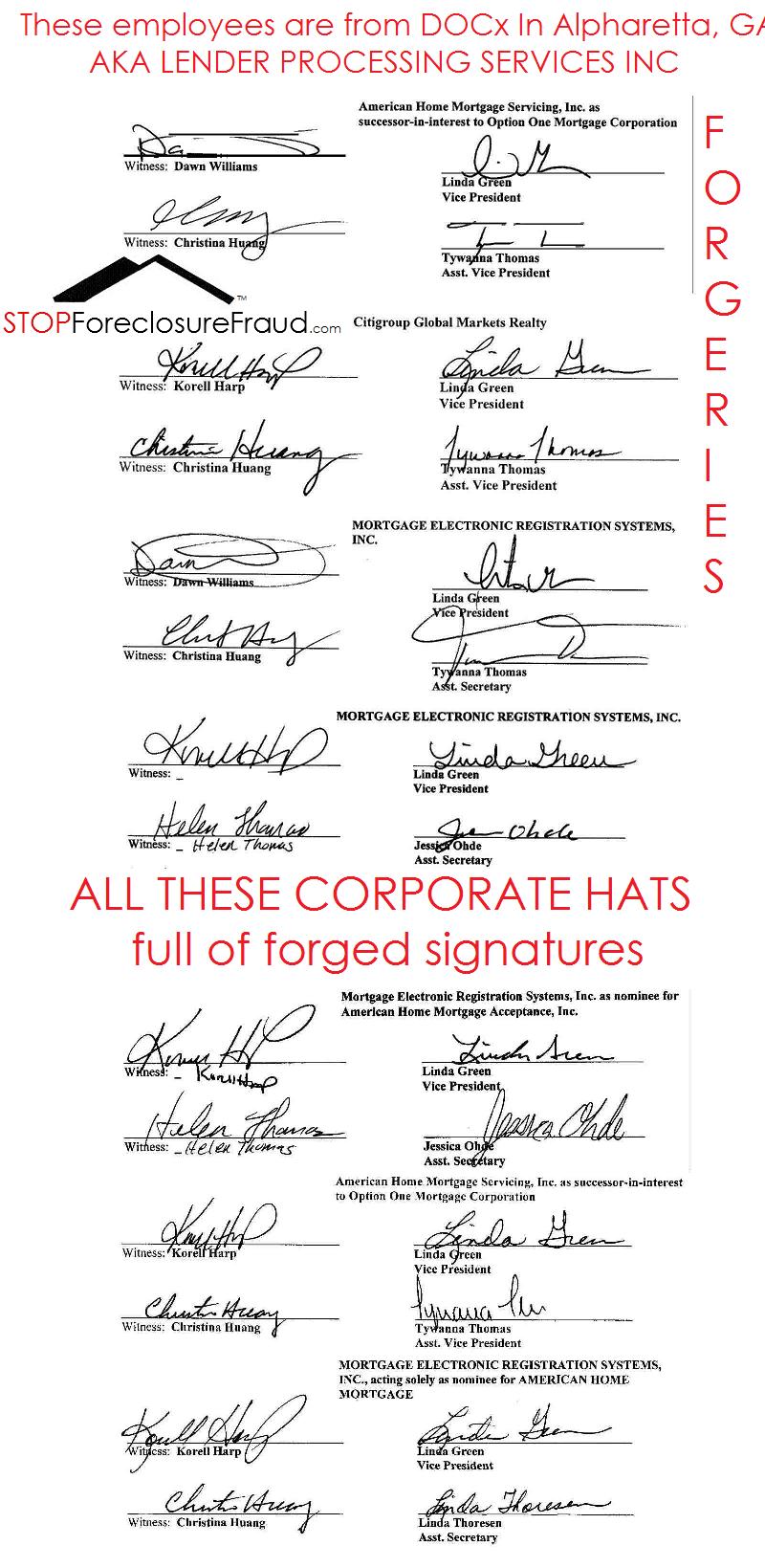












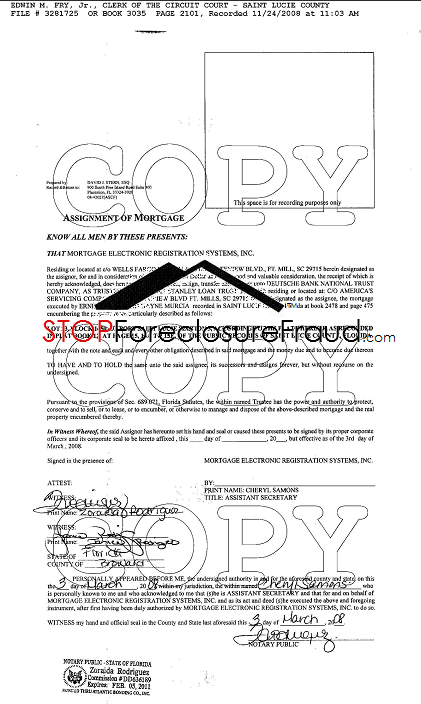


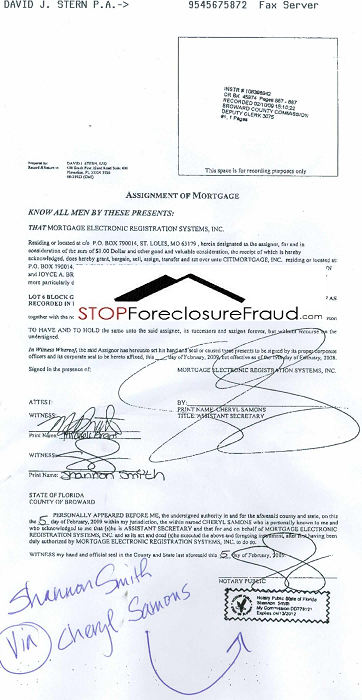
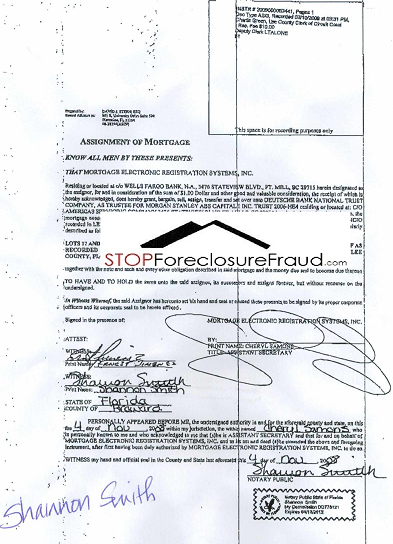

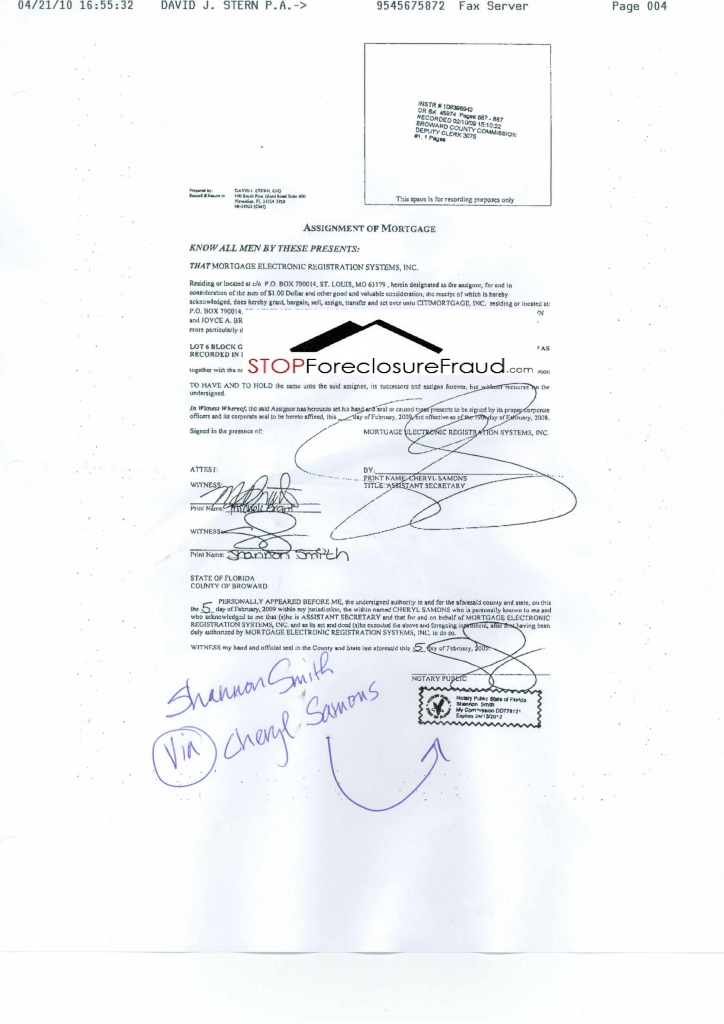
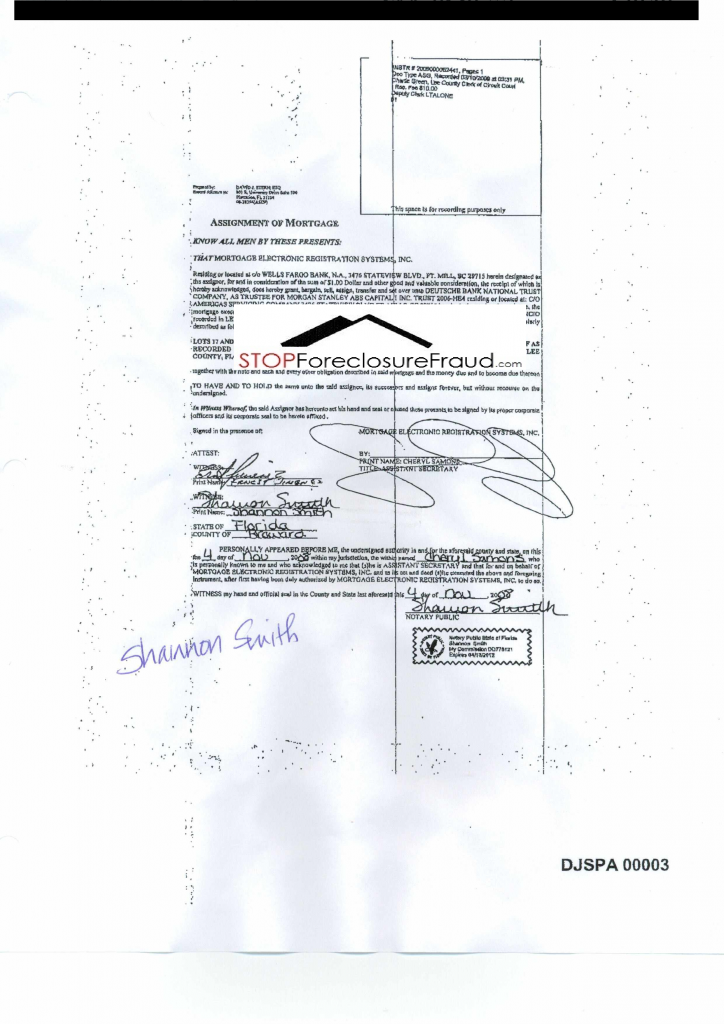







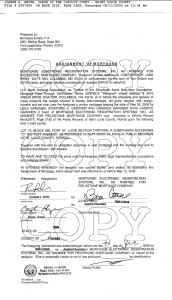
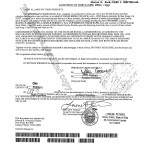
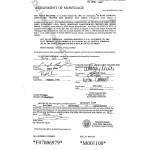
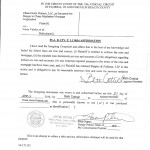
 Nicole Bengiveno/The New York Times
Nicole Bengiveno/The New York Times
Recent Comments